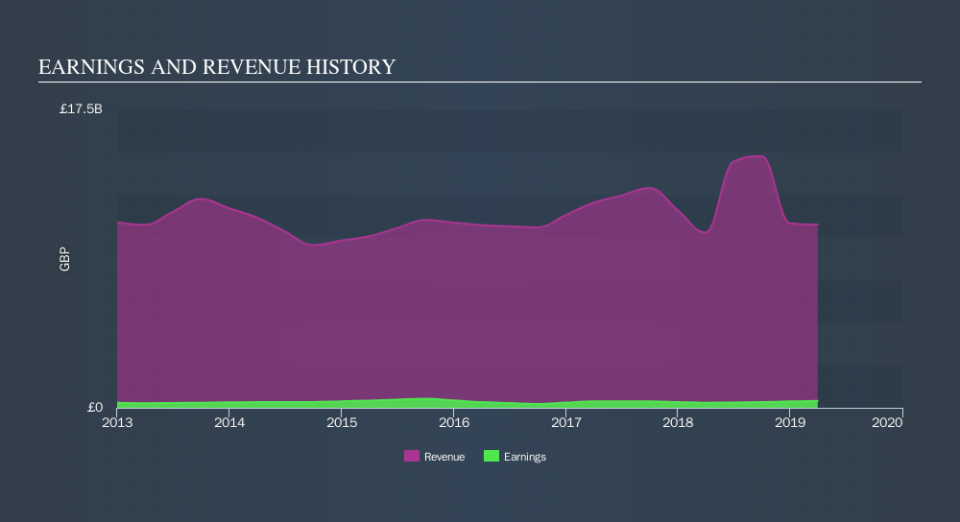Does Johnson Matthey Plc's (LON:JMAT) 39% Earnings Growth Reflect The Long-Term Trend?

When Johnson Matthey Plc (LSE:JMAT) released its most recent earnings update (31 March 2019), I compared it against two factor: its historical earnings track record, and the performance of its industry peers on average. Understanding how Johnson Matthey performed requires a benchmark rather than trying to assess a standalone number at one point in time. Below is a quick commentary on how I see JMAT has performed.
Check out our latest analysis for Johnson Matthey
Did JMAT's recent earnings growth beat the long-term trend and the industry?
JMAT's trailing twelve-month earnings (from 31 March 2019) of UK£413m has jumped 39% compared to the previous year.
Furthermore, this one-year growth rate has exceeded its 5-year annual growth average of -2.4%, indicating the rate at which JMAT is growing has accelerated. What's the driver of this growth? Let's take a look at if it is merely a result of industry tailwinds, or if Johnson Matthey has seen some company-specific growth.
In terms of returns from investment, Johnson Matthey has fallen short of achieving a 20% return on equity (ROE), recording 16% instead. However, its return on assets (ROA) of 7.7% exceeds the GB Chemicals industry of 5.7%, indicating Johnson Matthey has used its assets more efficiently. Though, its return on capital (ROC), which also accounts for Johnson Matthey’s debt level, has declined over the past 3 years from 15% to 14%.
What does this mean?
Though Johnson Matthey's past data is helpful, it is only one aspect of my investment thesis. Positive growth and profitability are what investors like to see in a company’s track record, but how do we properly assess sustainability? I recommend you continue to research Johnson Matthey to get a better picture of the stock by looking at:
Future Outlook: What are well-informed industry analysts predicting for JMAT’s future growth? Take a look at our free research report of analyst consensus for JMAT’s outlook.
Financial Health: Are JMAT’s operations financially sustainable? Balance sheets can be hard to analyze, which is why we’ve done it for you. Check out our financial health checks here.
Other High-Performing Stocks: Are there other stocks that provide better prospects with proven track records? Explore our free list of these great stocks here.
NB: Figures in this article are calculated using data from the trailing twelve months from 31 March 2019. This may not be consistent with full year annual report figures.
We aim to bring you long-term focused research analysis driven by fundamental data. Note that our analysis may not factor in the latest price-sensitive company announcements or qualitative material.
If you spot an error that warrants correction, please contact the editor at editorial-team@simplywallst.com. This article by Simply Wall St is general in nature. It does not constitute a recommendation to buy or sell any stock, and does not take account of your objectives, or your financial situation. Simply Wall St has no position in the stocks mentioned. Thank you for reading.

